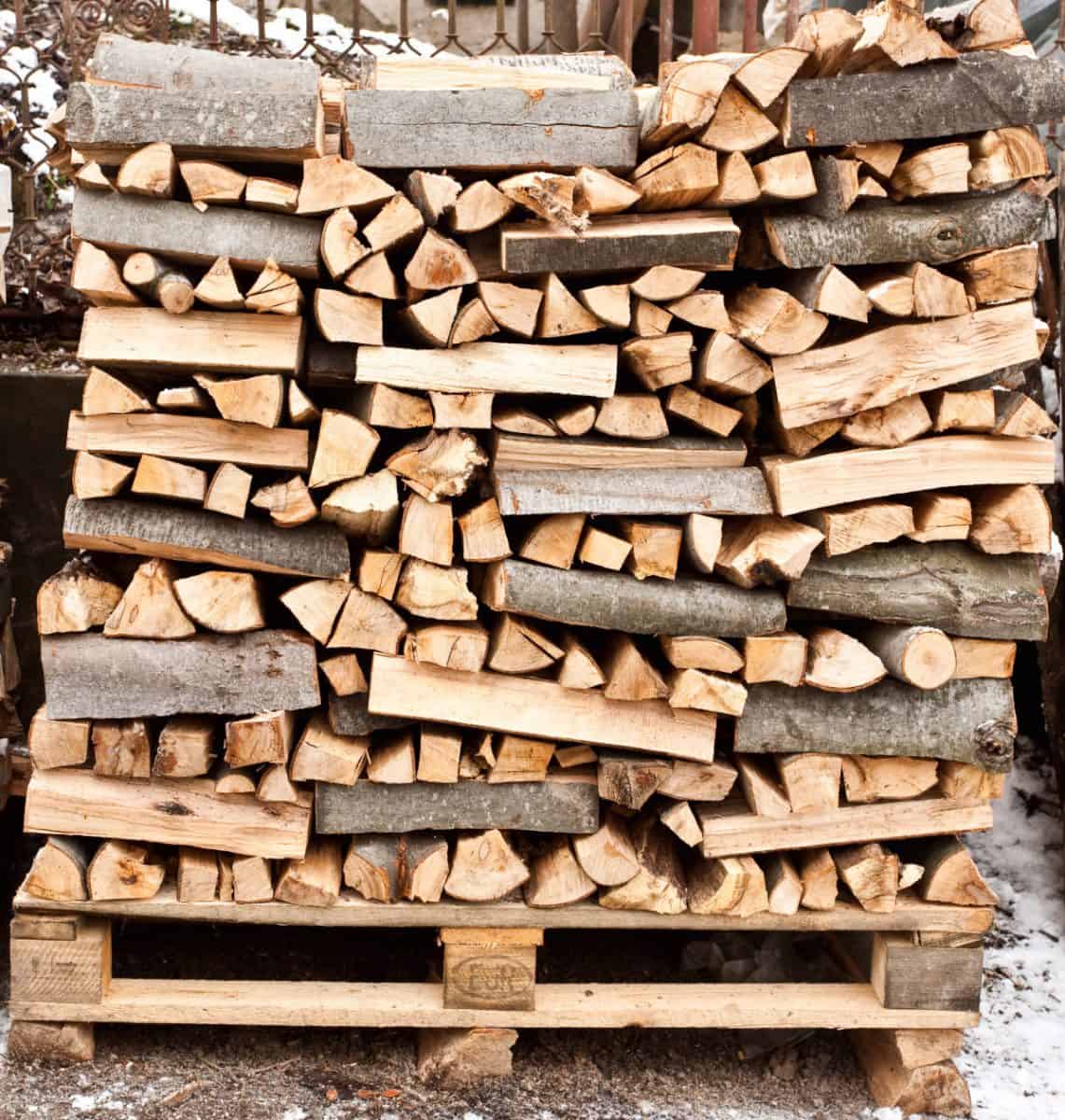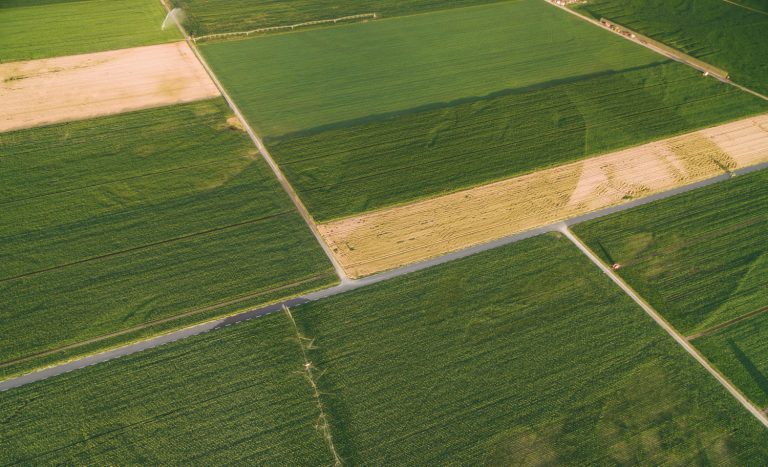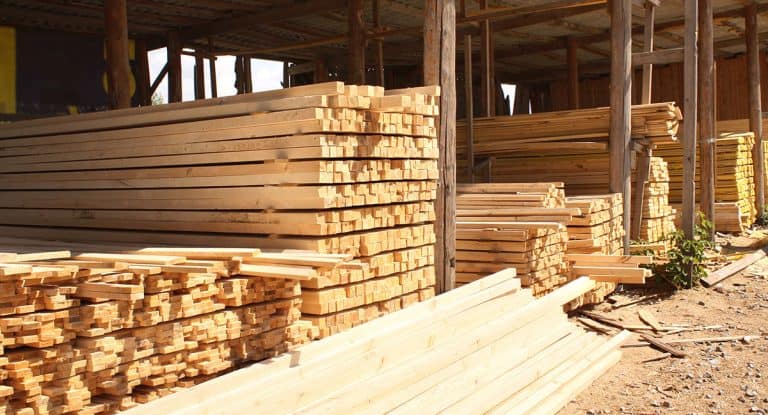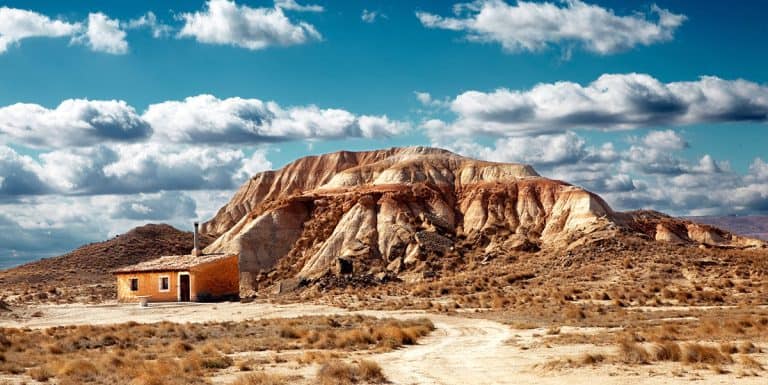How Much Land Do I Need to Grow Firewood?
Firewood is one of the best alternatives for heating your home in winter because it is renewable and produces less pollutants than other fuel types when burned correctly. But how much land do you need to grow firewood?
This blog post will explore the answer to that question and help you figure out what size of land you’ll need. I will provide some information on how much firewood can be grown with certain plot sizes and what types of trees produce more firewood than others. We will also cover the work involved in growing your own trees. Finally, I’ll give some tips on how to harvest and store your firewood.
How Much Land Do I Need to Grow Firewood?
As a rule of thumb, you can sustainably harvest one half to one full cord (128 cubic feet or 4’x4’x8′) of firewood per acre per year. The actual amount of wood that can be harvested from any parcel of land varies depending on many factors, including: how close the trees are planted together, age and type of tree, soil quality, elevation changes in the terrain (hillside vs. bottomland), whether there’s slope exposure or windbreak protection, and many other factors.
Therefore, it’s a difficult question to answer exactly without knowing the specifics about your property, but you will most likely need at least one acre of land to grow firewood. Any less than one acre can be a good addition and a fun activity, but it will not produce enough wood to heat even a small house throughout a northern winter. Consider looking into coppicing if you want as much wood as possible out of a small plot of land.
If you have more than an acre, that’s great! You can plant trees on your property and harvest them for years to come. The amount of land you need will depend on the type of wood you’re growing and how much wood is needed. For example, an acre of mature oak can produce about 3 cords per year, while an old pine forest can yield even more. Although a good rule-of-thumb is to plant 2 acres per cord, but this may vary depending on your region and climate.
How Many Cords of Firewood do I need?
Many factors affect how long it takes to burn one cord of firewood. The best way is to track your current consumption:
- Estimate how many hours of heating you’ll need per day by keeping track of your daily use
- Calculate the number of days in your typical winter season
- Multiply the two numbers together to get the total amount of firewood needed for your winter season
If you don’t already own a wood stove or you are planning to move and unsure about how much wood you will need in the new house, this will typically be in the region of 1/3 to 4 cords per winter month, depending on how efficient the wood stove it, how well insulated the house is, and how much space you need to heat.
Modern wood stoves are much more efficient than old stoves or fireplaces. The old cast iron wood stoves may be beautiful, but they can also cost you several cords more per year than a newer model.
What Types of Trees Are Best for Producing Firewood?
The best types of trees to grow for firewood are trees that grow fast relative to their BTU rating. Some species that work well in colder climates include maple, elm, and oak., but this depends on where you live. If you’re in the northeast, birch is another excellent choice.
It’s important to choose a tree species that grow quickly so it will be ready when needed. Still, you should also consider how densely you can plant them available because different species need varying amounts of room to grow well. The table below estimates how many trees of various sizes you will need for one full cord.
| Tree Diameter at 4 ½ feet | Number of Trees to Make a Cord |
|---|---|
| 5″ | 50 |
| 6″ | 20 |
| 7″ | 12 |
| 8″ | 8 |
| 9″ | 6 |
| 10″ | 5 |
| 11″ | 4 |
| 12″ | 3.5 |
| 14″ | 2.5 |
| 16″ | 2 |
| 18″ | 1.5 |
| 22″ | 1 |
As you can see, the answer to this question is not always simple or straightforward, as it depends on many factors such as where you live, how much wood you need, what kind of stove you are using, etc.
What Is the Best Climate for Growing Firewood Trees?
Many climates can support firewood trees, but some may be more appropriate than others. The best climate for growing firewood trees is a temperate one. The average annual temperature should range from 32 to 50 degrees Fahrenheit, and the winter months should see temperatures below freezing.
It’s important to consider the latitude you live in when deciding whether your region would be suitable as an area to plant firewood trees. You should also take into account any obstacles such as poor soil quality. Firewood trees need at least 50 inches of rain per year to grow, so if you live in an area that only gets about 30 inches or less, it’s best to look elsewhere. If your land can get more than 60 inches of rain per year and has deep soil, then you’re off to a great start!
How to Grow Firewood
Growing your own firewood can be a great way to save money, enjoy nature, and get exercise. Whether you live in the city or country, there’s plenty of unused lands that are perfect for growing firewood.
The best time of year to plant trees for future harvest is during the dormant winter months or early spring as soon as the ground is no longer frozen. Regardless of what species you plant, prepare to be patient as trees need time to mature. Buying land in an existing forest may be well worth it. Even if the existing trees are not of a perfect firewood species in terms of growth rate and energy rating, you can gradually replace them with a better species as you harvest and replant.
- Decide on the type of wood you want to grow. Consider your location and other factors, as mentioned above, and plant a suitable species for you. Check this great overview of tree species.
- Plant your seedlings in a sunny spot with good drainage and plenty of water.
- Keep an eye out for pests, including insects and rodents that may eat or damage the trees.
- Once they are planted, it will take about five years (depending on species) before you can harvest firewood. Harvest regularly to maintain the growth rate.
The process of growing even a small wood can seem daunting, but with the right knowledge and equipment, it can be a fun and rewarding experience.
How to Harvest Firewood
It is important to know how to harvest firewood for it to be done right. It is hard work, and You need the proper tools and equipment, but it’s well worth the effort when you are enjoying the fruits of your labor. If you have never harvested firewood before, here are some tips that will help you out.
Fell the Trees and Collect the Wood
Felling trees is serious business, and it’s important to have a plan in place before you start cutting down trees. It can be tempting to just go out into the woods and start hacking away, but this is rarely the best idea. You need to select the right trees and also make sure that there are no hidden obstacles like power lines or other people on your property.
The process of felling trees can be a dangerous job. From the time you start to cut down the tree until it is safely on the ground, there are many potential risks for injury. You should take several safety measures to ensure that you and others around you stay safe during any part of this process:
- Clear the area of any obstacles
- Make sure you have a clear escape route in case anything goes wrong
- Wear appropriate protective gear, such as a hard hat, gloves, and chainsaw chaps
- Be aware of where your chainsaw is pointed at all times to avoid accidents
- Keep an eye on what’s happening around you – if there are children nearby, for example, make sure they’re safe from falling branches or other debris
Here is a great video on how to make the right cut when felling a tree in the direction you want:
When the tree is down, cut all the side branches into manageable sizes. If the branches are thick enough to be used as firewood, I recommend you start cutting at the tip of the branches and work your way in towards the trunk – it’s a lot easier to cut a branch while it’s attached to the tree.
Now, cut the wood into logs that are four to six inches in diameter and 18 to 24 inches long.
Splitting the Wood
Wood-splitting is a great form of exercise. It’s hard work but it’s fun, healthy and safe when done right.
When you’re splitting wood, you need a high-quality splitting axe. I have used many different brands over the years and have found the Fiskars X27 Splitting axe to be the best ax for anyone splitting logs of various sizes. It’s very durable and heavy enough to do the job right, while the lightweight fiberglass handle makes it a joy to use. If you are not a big person, you may prefer the X25, which is a little shorter and almost as efficient.
If you have a lot of wood to split, I recommend you get an electric splitter in addition to the axe. The WEN’s Electric Log Splitter is a great way to split logs without worrying about strength or endurance. It features a powerful 15-amp motor that puts out up to 13,000 pounds of pressure for quick and easy splitting. This electric log splitter has a 20.5-by-10-inch log capacity which is sufficient for most jobs.
Stack the Wood
Do you know how to stack firewood? Believe it or not, there is a right way and a wrong way. Firewood stacking can be difficult if you don’t know the proper technique, but once you get the hang of it, it’s really quite simple. Learn how to stack firewood with these easy steps:
- First, find a flat surface to stack your firewood
- Place logs in two rows, with the ends of each row touching
- Stack the next row perpendicular to the first row, making sure that it is lined up exactly with the other logs and that its ends touch those of the first row
- Continue stacking rows until you have used all your wood or until you have reached the desired height

If the wood is not kept under a roof, you should cover the top row with tarps or plastic sheeting to protect it against rain and snow. You will not want to cover the entire stack as there needs to be air circulation to dry the wood and prevent mold.
The best way to dry firewood is in a shed or garage with good airflow and plenty of sunlight. In most but the hottest climates, firewood should dry for at 6 months to one year before you use it. Very dense wood may need to dry for two years.
Congratulations! You now have at your disposal a reliable source of wood. This will keep you warm throughout the coming winter seasons, and make sure that your family is kept in comfort as well.






